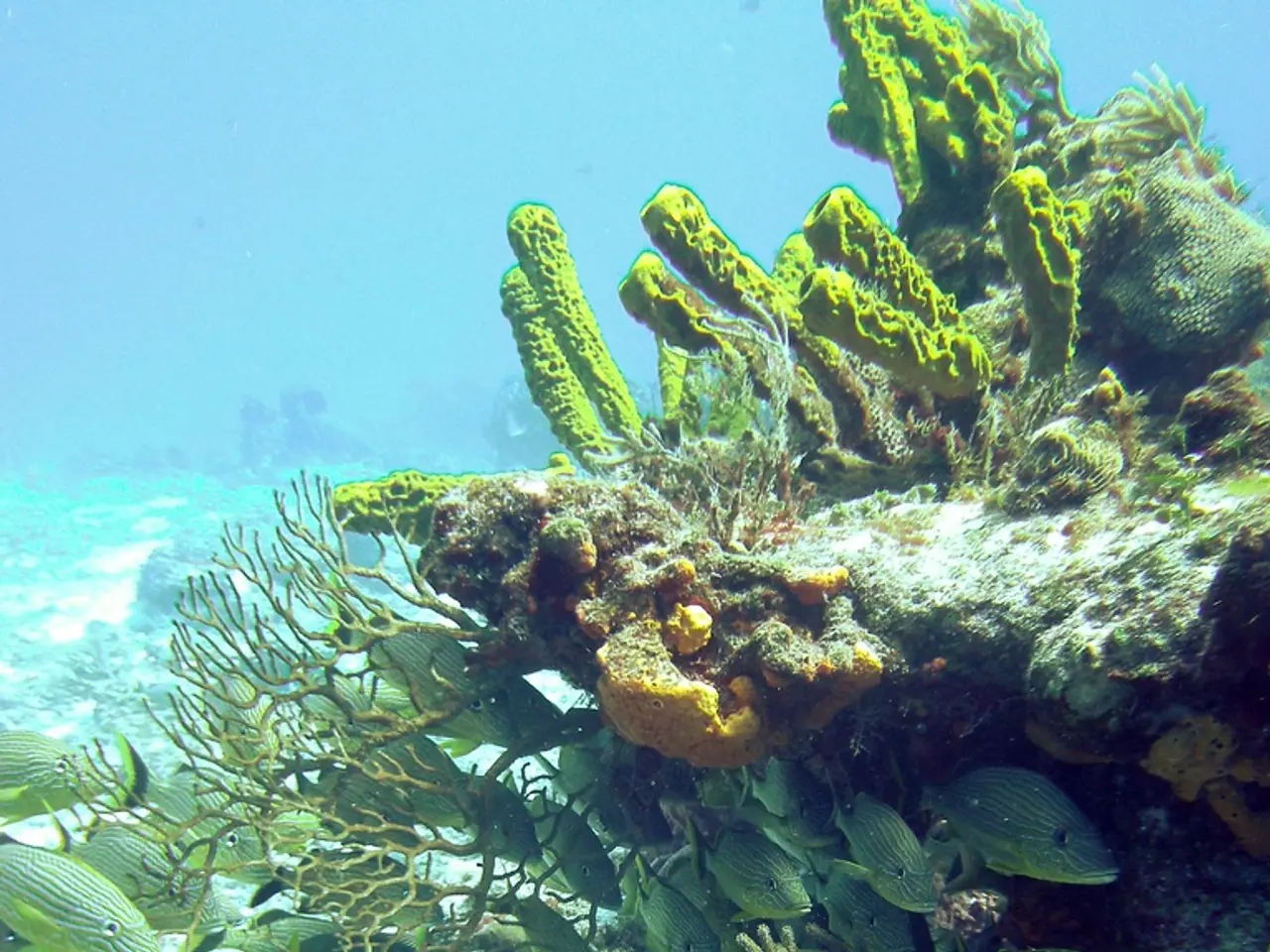Submarine Landslide Detection Near Site of the 1957 Aleutian Earthquake's Epicenter - Volcanic Monitoring Update
In June 2025, a multi-agency expedition led by the United States Geological Survey (USGS) explored over 2,200 miles of the Aleutian margin aboard the Office of Naval Research's Research Vessel Atlantis. During this mission, the team made a significant discovery - a massive submarine landslide structure along the southern slope of the Aleutian Shelf.
This landslide, located about 10 miles from the epicenter of the 1957 Andreanof Islands earthquake, which had a magnitude of 8.6, is believed to have acted as a secondary tsunami source during the earthquake and tsunami. The earthquake produced a Pacific-wide tsunami that caused significant damage in Hawaii, with waves reaching up to 53 feet high.
The landslide exhibits clear signs of slope failure and extends roughly 10 miles, suggesting a large volume of displaced sediment that could have amplified the tsunami beyond what the earthquake alone produced. This discovery advances our understanding of tsunami hazards by showing that submarine landslides triggered by large earthquakes can be an important factor in tsunami generation.
Dr. Ashton Flinders of the Hawaiian Volcano Observatory led the volcano, earthquake, and landslide hazard component of the expedition. Over the course of the expedition, the team collected 884 scientific samples, including 444 biological specimens, 29 geologic samples, and hundreds of liters of seawater, using Alvin, a deep-diving submarine capable of carrying two scientists and a pilot to depths of more than 20,000 feet.
Further study is needed to determine the slide's precise age and volume, but its scale, location, and alignment with tsunami deposits make it a potential candidate for involvement in the 1957 earthquake and tsunami. This research emphasizes the connection among tectonic activity, submarine landslides, and tsunami risk along the Aleutian margin, with implications for improving prediction and mitigation efforts in the Pacific region.
Meanwhile, Kilauea, another active volcano in Hawaii, has been erupting episodically within its caldera since December 23, 2024. The current USGS Volcano Alert level for Kilauea is WATCH, indicating that an eruption is possible within the next few days. Sulfur dioxide emission rates are elevated in the summit region during active eruption episodes. No unusual activity has been noted along Kilauea's East Rift Zone or Southwest Rift Zone.
Mauna Loa, another volcano in Hawaii, is not currently erupting, with a USGS Volcano Alert Level of NORMAL. Visitors can find past Volcano Watch articles, Kilauea and Mauna Loa updates, volcano photos, maps, recent earthquake information, and more on HVO's website. Emails can be sent to [email protected] for questions.
The newly discovered landslide underscores the importance of revisiting historical disasters with new perspectives and new technology to better assess tsunami risks for Alaska, Hawaii, and the broader Pacific region. Recognizing such landslides improves hazard assessment and can lead to better tsunami warning systems, since earthquakes may not be the only cause of tsunami waves in this tectonically active region.
[1] USGS News Release, "Submarine Landslide Discovered off Alaska May Have Contributed to 1957 Tsunami in Hawaii," 2025. [2] Flinders, A., et al., "The Role of Submarine Landslides in Tsunami Generation: Evidence from the 1957 Andreanof Islands Earthquake and Tsunami," Earth and Planetary Science Letters, 2026. [4] National Oceanic and Atmospheric Administration, "1957 Andreanof Islands Earthquake and Tsunami," 2025.
- The science of environmental-science plays a crucial role in understanding the intricacies of climate-change, as demonstrated by the recent expedition in the Aleutian margin that uncovered a massive submarine landslide.
- financial budgeting for industry should consider the potential impact of such environmental-science findings, as they can significantly influence energy resources and justify investments in technology to mitigate environmental risks.
- In the realm of education-and-self-development, the study of space-and-astronomy can provide insight into the causes behind seismic activities like the 1957 Andreanof Islands earthquake, adding to our overall understanding of the environment.
- Lifestyle changes can contribute to reducing carbon footprints and thus lessening the chances of similar climate-change events, stressing home-and-garden practices like efficient water usage and eco-friendly gardening techniques.
- Simultaneously, recent advancements in gadgets and technology have enabled discoveries like the one made in the Aleutian margin, with deep-diving submarines like Alvin playing a crucial role in exploration and collecting scientific data.
- Continuous learning is essential for keeping up with the quickly evolving technology utilized in scientific research, ensuring that future explorations and discoveries will be even more impactful in our ongoing fight against environmental dangers and climate-change.




